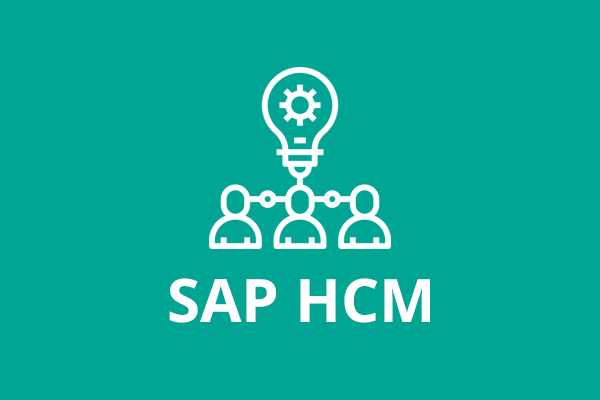SAP SuccessFactors Variable Pay
Learn the basics of complex calculation of bonus, incentives etc.Preview SAP SuccessFactors Variable Pay course
View Course Curriculum Price Match Guarantee Full Lifetime Access Access on any Device Technical Support Secure Checkout Course Completion Certificate 34% Started a new career
BUY THIS COURSE (
34% Started a new career
BUY THIS COURSE (GBP 12 GBP 29 )-
 29% Got a pay increase and promotion
29% Got a pay increase and promotion
Students also bought -
-

- SAP SuccessFactors Employee Central (end-to-end)
- 15 Hours
- GBP 12
- 1850 Learners
-

- SAP SuccessFactors Recruiting (RCM) and HXM Talent Management
- 20 Hours
- GBP 12
- 293 Learners
-

- SAP HCM (Human Capital Management)
- 20 Hours
- GBP 12
- 2492 Learners

SAP SuccessFactors Variable Pay is a module by SAP that facilitates planning and administration of Bonus Pay that includes complex calculation of business performance and employee performance.
In essence, SAP SF Variable Pay is a cloud-based solution and manages complex calculation based on three goals: Individual goal, Team goal, Group goals.
SAP SF Variable Pay module facilitates the administration of complex bonus calculations that include quantitative business performance and employee performance measures. At an elevated level, it's a solution that provides a streamlined bonus planning and payout process.
It allows management to calculate separately for the different time period in the same year by importing the files from history files and assign the work. SAP SuccessFactors Variable pay enables the organisation to calculate separately for employees who have moved from one project or division to others and smoothen the process. The information from history files helps to achieve business and team goals as well.
Features of SuccessFactors Variable Pay include: 1) Manages employees with bonus target amounts, 2) Calculate bonus payout on weighted business, individual and/or team goals, 3) Integrated employee performance into bonus calculation either as additive or multiplicative component, 4) Assigns bonus plan based on one or more employee history fields, 5) Prorates bonus target amount for employees who are on a plan for a portion of the plan period, 6) Employees can be assigned to more than one bonus plan, 7) Forecasting Functionality
In this SAP SuccessFactors Variable pay Course by Uplatz, you will be able to learn the basics and introduction to complex calculation of bonus, incentives etc. You will also learn how it helps the organisation to achieve the three basic goals as well.
Course/Topic 1 - Course access through Google Drive
-
Google Drive
-
Google Drive
After completing this lesson, you will be able to:
● List the capabilities of SAP SuccessFactors Variable Pay
● Compare the SAP SuccessFactors solutions of Variable Pay and Compensation
● Describe the Variable Pay Business Process
● Identify the main sections of the SAP SuccessFactors Variable Pay form
● Describe bonus plans and business goals functionality
● Explain how to calculate bonus payouts
● Describe the available variable pay reports
● Calculate a bonus payout
· Getting started with Variable Pay & its Permissions
· Set-up of Pre-program Tasks
· Setup & Configure employee data (Bonus data, History, Legibility data etc.)
· Understanding Business Goals & Setting-up of Variable Pay plan
· Variable Pay plan design, Defining Fields & Launch
· Knowledge on Planning Cycle
Get a Course Completion Certificate on successfully completing the course.
1. What is the reason for the name behind success factors?
The Success Factors is called so because they detail behaviours which relates to successful performance in the job.
2. What comprises in succession data model?
The Succession data model contains all the records of an employee. The succession data model is responsible to construct both internal and external fields.
3. What Kind of Configuration is done in the country specific succession data model?
The country specific succession data model is configured by address formats, country specific fields using international standards.
4. Define Corporate Data Model?
The Corporate Data model defines foundation object fields and their interconnectivity.
5. What is the purpose of propagation data model?
The Propagation data model is used for auto population from foundation tables.
6. What are the other data models used?
The other data models are:
Event Derivation rules
Workflow rules
7. How to mask sensible data in fields?
The sensible data in fields is masked by setting the attributepii=” true”.
8. How to set the field to be required so that it can be filled?
By setting the attribute required as true.
9. Define DTD?
DTD is also known as Document Type Definition. My view option is used for constructing a highly unified HR in the cloud.
10. Why three levels are present in a framework?
Because they detail a broad range of behaviour types which is very close to varied job roles
11. Define Corporate Data Model?
The Corporate Data Model refers the foundation object fields and their interconnections.
12. What is the purpose of Propagation Data Model?
The purpose is for auto population from foundation tables.
13. How is compensation pay calculated in SAP SF?
The Compensation Management package in SF handles compensation, variable pay and bonus. Compensation means the fixed salary pay whereas the bonus and variable calculations are based upon individual or team accomplishments.
14. How is Variable Pay calculated in SAP SF?
The Variable Pay calculations is done with a separate program in SuccessFactors Instance, the output is deviated to the people manager who has access to edit the sheet for final bonus and variable pay.
15. List out otherfeatures of SAP SF Variable Pay?
The Variable Pay allows the user to perform separate calculations for varied time periods in the same year. You can also perform separate calculations for staffs who shift from one project to another business or project.









